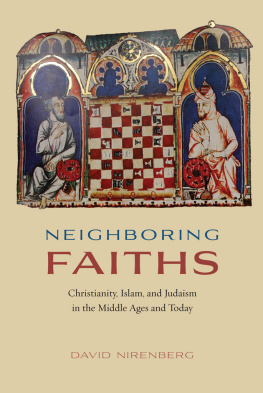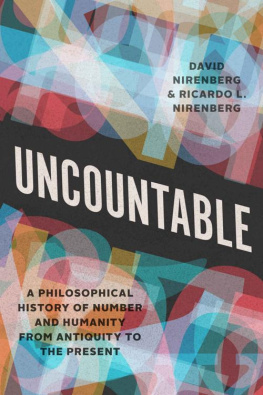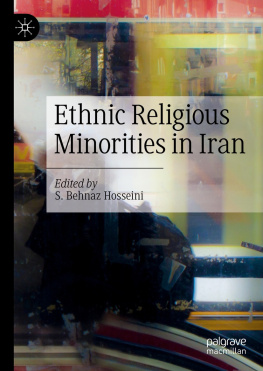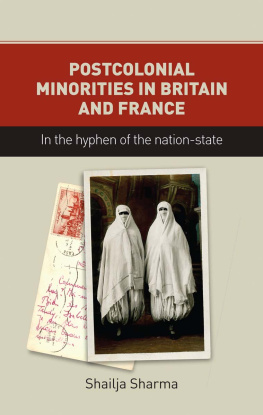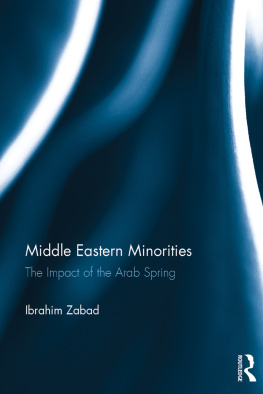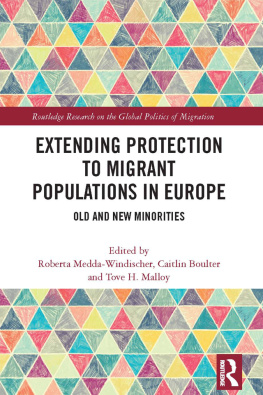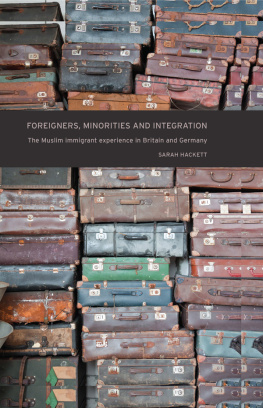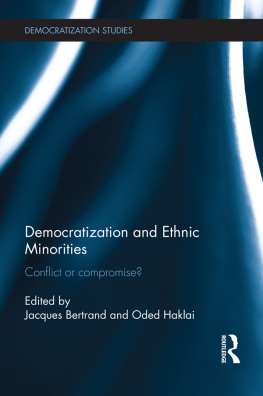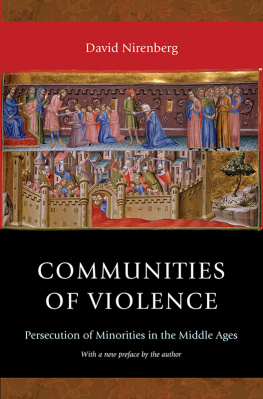
COMMUNITIES OF VIOLENCE
COMMUNITIES OF VIOLENCE
PERSECUTION OF MINORITIES IN THE MIDDLE AGES

David Nirenberg
With a new preface by the author
PRINCETON UNIVERSITY PRESS
PRINCETON AND OXFORD
Copyright 1996 by Princeton University Press
Published by Princeton University Press, 41 William Street
Princeton, New Jersey 08540
In the United Kingdom: Princeton University Press, 6 Oxford Street,
Woodstock, Oxfordshire OX20 1TW
Requests for permission to reproduce material from this work should be sent to
Permissions, Princeton University Press
press.princeton.edu
All Rights Reserved
First printing, 1996
First paperback printing, 1998
New paperback edition, with a new preface by the author, 2015
Paper ISBN: 978-0-691-16576-9
Library of Congress Control Number: 2015930408
British Library Cataloging-in-Publication Data is available
This book has been composed in Bembo
Princeton University Press books are printed on acid-free paper.
Printed in the United States of America
1 3 5 7 9 10 8 6 4 2
PREFACE TO THE NEW PAPERBACK EDITION
I did not have violence on my mind when I first entered the Archive of the Crown of Aragon in 1989. Relations between Muslims, Christians, and Jews in the Middle Ages were what I was looking for, and if I remember correctly I expected many of those relations to be loving, or at least sexual. My undergraduate studies had introduced me to a world of interfaith prostitution and occasional intermarriage in medieval Iberia, a world I hoped to explore and expand in a doctoral dissertation. My motives for that interest I cannot recollect. Perhaps I was searching for a potent and positive metaphor for the coexistence of the three faiths in the long ago and far away: an intimate medieval allegory for what seemed in 1989 (and still today) a religiously troubled present.
I say perhaps, but I doubt it. I was in my twenties when I researched and wrote Communities of Violence, the age at which rebellion against the comforting myths of childhood often takes its most aggressively intellectual form. From a lover of Andrew Lang and the Brothers Grimm I had turned into an (equally nave?) foe of those who search for idylls in the past. Like the eighteenth century German philosopher Herder (who was also writing about medieval Iberia), I dismissed irenic accounts of medieval relations between Muslims, Christians, and Jews as angenehmes Mrchen, comfortable fairy tales.
Nor did I follow those who trafficked in nightmares, like the political scientist Samuel Huntington, whose The Clash of Civilizations, published in the same year (1996) as Communities of Violence, prophesied a new world order of increasingly religious confrontation in which geopolitical conflict would be structured along the fault lines between competing civilizational blocks, each unified by a shared religion and culture that would put them at odds with their neighbors. I had (and have) little confidence in such prophets, and least of all in their pretensions to quantify the relative capacity for violence of a given religion or civilization. Islam has bloody borders, Huntington declared, blithely ignoring the beam in his own societys eye. To my mind, such projects were fairy tales as well, no less comforting for being terrifying.
I did not read Huntington (or Herder) until many years after Communities of Violence appeared. But both the yearning to discover times and places of peaceful religious interaction, and to project blame for violence upon one faith or another, now seem to me symptoms of a Zeitgeist emerging in the time period in which I was studying and writing: an era in which religion began to occupy, in the worlds attention, much of the space vacated by the receding ideological alignments of the Cold War. The topic of conflict between Muslims, Christians, and Jews was very much in the air (this was, after all, the period of the first Palestinian Intifada). All of uswhether as students, citizens, consumers of news or media, church- mosque- or synagogue-goersimbibed various treatments of it more or less unconsciously in our intellectual water.
In short, although in retrospect I can propose a context, I cannot say exactly what impulses, hopes, and aspirations drove me up the stairs of Barcelonas Palau del Lloctinent, the mid-sixteenth century palace built by Charles V that had once provided offices to the Inquisition, and that housed (from 1836 to 1994) the Archive of the Crown of Aragon. What I do know is that a years worth of bleary-eyed hours later I emerged from that palace with thousands of documents, some concerned with love and sex, to be sure; others with commerce, collaboration, even co-conspiracy; still others with riot, murder, and massacre. It seemed impossible to balance these archival registers through a polarized accounting: evidence of tolerance on one side of the ledger, of violence on the other.
On the contrary, the most intimate collaborations tended to surface in the archive only because accompanying violence had brought them to bureaucratic attention. The most regular acts of violence (such as annual riots by Christians against Jews during Holy Week) appeared, on account of that very regularity, to be part of a system of restraint that made coexistence possible. And even the bloodiest massacres (such as those that accompanied the arrival of the Shepherds Crusade in 1320 or the Black Death in 1348) revealed not only the punctuating potential of exterminatory violence in these multi-faith communities, but also the power of those communities to recover, after such devastating ruptures, something like what today we might call a pluralist equilibrium.
This co-production of community and violence apparent in the sources is difficult for historians to tolerate, judging from my own reactions to this initially inchoate mass of documentation. Often enough we build our arguments for the tolerant virtues of a particular period or religious culture by neglecting episodes of violence, or setting them aside as aberrational, exceptional, non-systemic, unrevealing. In search of a heuristic golden age, we see nothing that isnt yellow. Conversely when we want to emphasize a given society, religion, or cultures propensity toward barbarity, it is violence that is structural, coexistence that is merely strategic or situational, and history begins to look like a long list of cruelties, an endless tour of mass graves.
Such polarized histories are important. They articulate values (such as pluralism or toleration) by identifying heroes and villains and marking them with hats of the appropriate color, providing us with what we might call historicized morality tales. They can even make us more critically aware of our own prejudices and assumptions, as when a golden age (Herders fairy tale) of tolerance in medieval Al-Andalus (the Arabic name for Islamic Iberia) is today deployed to interrogate liberal Western claims to moral and political superiority over contemporary Islamic movements.
But precisely because these histories tend to divide the evidence, they tend to obscure the question that eventually came to interest me in Communities of Violence, namely: what is it about a given multi-religious society that gives it the potential to produce both coexistence and violent intolerance, and what determines which of these potentials is actualized at a given time and place? Eleventh century Muslim Granada was simultaneously capable, within a generation, of elevating a Jew to the position of prime minister (
Next page

